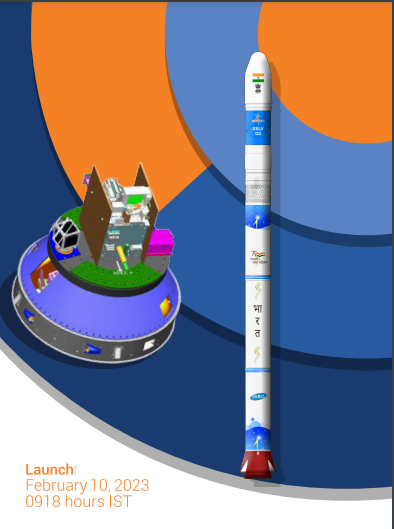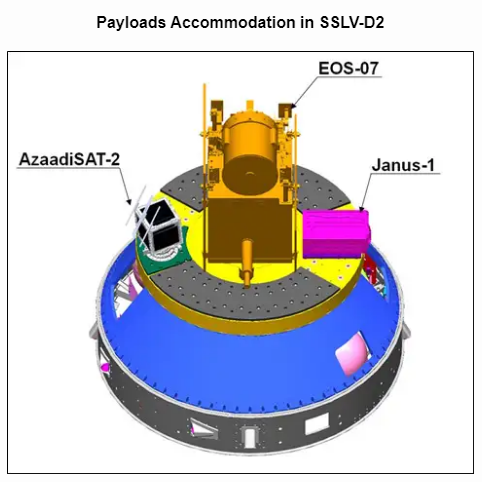The second developmental flight of SSLV comes almost six months after its maiden mission in August did not succeed. This time, it will carry three satellites, including AzaadiSAT-2, which was built by 750 girls from different schools across India
India’s Small Satellite Launch Vehicle (SSLV) is all set to soar into space for the second time this Friday with three new satellites, Indian Space Research Organisation (ISRO) has just announced. This would be the second developmental mission of the country’s indigenously-built rocket after an unsuccessful maiden trip to space in August last year.
The 34-m-tall rocket with a lift-off mass of about 120 tonnes would ascend into space from the first launch pad at Satish Dhawan Space Centre in Sriharikota on February 10 precisely at 9.18 am. Its target will be to inject three satellites into space – EOS-07, Janus-1, and AzaadiSAT-2.
Read More: Actual Covid Infections in India 17 Times Higher Than Reported: BHU Study
Within 13 minutes of its launch from Sriharikota, the rocket will inject the first satellite, EOS-07, into orbit, followed by the other two within a gap of a minute each. All of them will be placed into a circular orbit around the earth at an altitude of about 450 km during its 15-minute flight.
THREE SATELLITES INCLUDING AZAADISAT ONBOARD
EOS-07 is designed by Indian scientists for earth observation. It weighs about 156.3 kg, and will have new experiments onboard including Wave Humidity Sounder and Spectrum Monitoring Payload. While Janus-1 is a foreign satellite that belongs to an American company – ANTARIS. It is relatively lighter, weighs almost 10.2 kg, and is meant for technology demonstration.


The mission will also look to achieve what it could not with its maiden launch in August 2023. The rocket will try to place AzaadiSAT-2 – an 8.7-kg satellite built by over 750 girl students from across the country under the guidance of Chennai-based space start-up – Space Kidz India. The satellite aims to demonstrate amateur radio communication capabilities, as well as measure radiation levels in space.
Read More: Indian Railway to Roll Out 2-3 Vande Bharat Trains Every Week, Says Minister Vaishnaw
MEANT FOR READY-TO-LAUNCH MISSIONS
The 34-metre-tall new-generation rocket is India’s answer to the growing commercial satellite market that thrives on launch-on-demand capabilities. The country has high hopes from SSLV-D2 which has been specifically designed to give a boost to its commercial operations in the space sector through its commercial arm – IN-SPACe. SSLV is cost-effective, convenient to carry smaller satellites into space, and has a very less turnaround time – thus perfect to meet the “launch-on demand” needs.
The SSLV can carry mini, macro, and nano satellites weighing anywhere from 10 to 500 kg and inject them into low-earth orbit – thus providing low-cost access to commercial satellites most of which are small. It’s a three-stage rocket that can accommodate multiple payloads and requires minimal infrastructure.
SIX MONTHS AFTER FIRST LAUNCH
The mission comes almost six months after the SSLV’s first developmental flight in August did not meet the desired outcome, and the satellites including AzaadiSAT hurtled towards the earth shortly after launch.
ISRO chief S Somanath had put it down to an “anomaly in placement of satellites in the destined orbit”, which was perhaps caused by the rocket’s automated response after it detected a sensor failure in the system. “It identified a sensor failure, and went for the salvage option. This means that the system had a deficiency, which we need to look at carefully,” he had said, after the launch. He said, except for this anomaly, every other element in the rocket had performed very well.





































